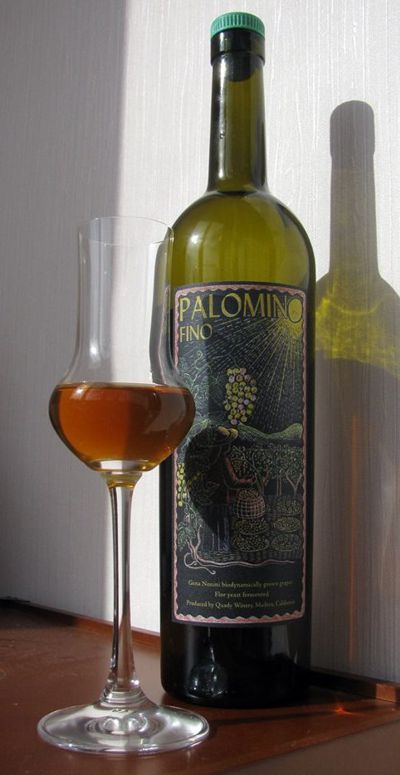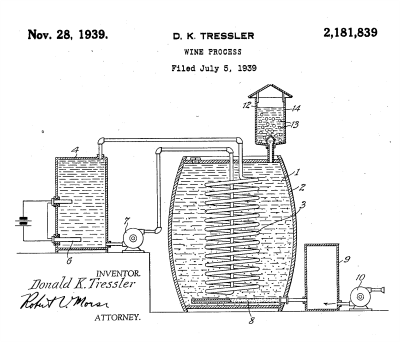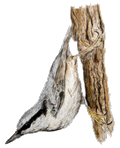
- Sherry Wine:
- Production
- Classification
- Cities & Bodegas
- Tastings
- Analogues
- Authors & Contacts
- Ðóññêèé ñàéò
Sherry analogues
Sherry Analogues in the USA
Olga Nikandrova and Denis Shumakov.

Quady Winery Palomino Fino —
a Californian analogue of Amontillado
In the USA, there are several sherry-connected phenomena, which are very difficult to unify — except for the US territory and some (at times very weak) connection with sherry proper, they have nothing in common.
First of all, there’s an appreciable number of sherry connoisseurs living, working and actualizing their interest in this wine in various interesting ways in the USA. They carefully study sherry culture and write excellent books, like Peter Liem. They find and select sherry according to their taste, bottle and sell it under their own brand, like Alex Russan. Or simply collect the superb sherry assortment for their liquor store, like specialists from K&L Wine Merchants. Of course, there’s no special American uniqueness in these initiatives — but these are wonderful projects, they are connected with sherry as well as with the USA, so they must be mentioned.
Second, In the USA, there are at least two wine houses which produce wine using sherry production method and/or traditional sherry grape varieties. As of the spring 2014, we know two such wines: Shinn Estate Vineyards Veil and Quady Winery Palomino Fino. The producers use the word sherry freely when describing their wine; but the wine isn’t labeled as “sherry”, so, technically, all formalities are carefully observed. Describing these wines, producers use the word “sherry” quite freely, but they do not call their sherries, that is, all legal formalities are strictly observed. By the way, to designate sherry analogues in English articles, the term Sherryesque Wines is sometimes use. So, both New York Veil, and Californian Palomino Fino are 100% Sherryesque Wines, and it was very interesting to find and try them. We haven’t yet got hold of Shinn Estate Vineyards Veil, but Quady Winery Palomino Fino turned out to be a very pleasant wine in the style of Amontillado.
Third, the US produces quite a few wines labeled with the word “sherry” (sometimes in combination with other words, for example — Californian Sherry), but they have a very remote relationship to sherry. The fact is that both sherry wine and the word “sherry” came to the US much earlier than the Spaniards got concerned about the protection of the name of their wine by origin. And at the time when this protection began to be implemented, in the United States, a habit of drinking a certain kind of wine, which both producers and consumers were accustomed to call “sherry”, had already taken shape.
It is quite difficult to get the idea of this habit without immersion in the mass American alcoholic culture, but we’ll take the liberty of suggesting that in this massive American alcoholic culture sherry occupies, or occupied, the same place that in the late Soviet alcohol culture was occupied by port wine. Not the port from the Douro valley, of course, but the Soviet one, with three sevens on the label or some other equally convincing symbols. Just like Soviet port wine, American sherry is optimized for the price / efficacy ratio — that is, it is quick-acting, inexpensive and relatively comfortable to cause intoxication. And, of course, it is mostly sweet (unsweetened variants of such drinks also exist, but they are in minority — and are apparently created for aesthetes).
Despite the fact that this sweet, fortified and heady American drink has no relation to real sherry, it has two noteworthy features. The first feature is that American sherry can be produced from local American grape varieties, among which Concord variety is particularly often used. It is red and belongs to Vitis labrusca (fox grape) species, whereas in traditional winemaking, Vitis vinifera is used almost exclusively, and in the production of real sherry — only white grape varieties. That is, pseudosherry made from such raw materials ceases to be a cheap American counterfeit and turns into a local (mainly — New York) specialty (which, of course, does not automatically make it tasty).
The specialty profile of American sherry is aggravated by its processing technology (and this is the second feature). In order to resemble sherry in taste, aroma and color at least distantly, Concord wine must be rid of its characteristic aroma, discolored (red sherry is over the odds even for cheap wine) and oxidized. To ensure that all these procedures are carried out quickly and inexpensively, the Tressler process is used.

Tessler apparatus, a drawing from the patent
In 1939, Donald K. Tressler patented the technology of manufacturing “wines of high quality such as port, Madeira, Burgundy, etc.” and separately — the technology of sherry production from Vitis labrusca. The essence of these methods is that the wine stock made from Vitis labrusca is heated (for sherry up to 57°C, for other wines a little less) while simultaneously passing large quantities of minute bubbles containing oxygen through the heated stock. After several weeks of such treatment, the product acquires sherryesque color and flavor (Madeira, port wine and Burgundy color and aroma are achieved even faster).
We’d surely try this product with a convenient opportunity. But we probably aren’t going to take special trouble to do it. However, if someone has a substantive interest in such an American sherry, here is a video with the tasting of such wine. Guys in the video are daring people, by the way.
In fairness it must be noted that some producers of American sherry position their product as a cooking wine. And we are sympathetic to this positioning.
To recap, the ways of the appearance of Spanish sherry in the US market, American sherry experts and American sherryesque wines deserve respect, envy or lively interest (or all at once). The simpler booze variant of American sherry is nothing to go after.
Here are sherry analogues from the US which we have tasted so far (in Russian):
— Quady Winery Palomino Fino
Warning!
This site can contain information about drinks excessive consumption of which may cause harm to health and is unadvisable for people who didn’t come of age.
Share Sherry
- Sherry.wine, FEDEJEREZ
- Copa Jerez, Sherry Week
- Sherry Notes, Jerez de Cine
- Los Generosos, Criadera
- Jerez-Xeres-Sherry
- Los Vinos de Jerez
Articles
- There are more articles in Russian than in English in this website. Sorry :(
Reviews
- To our great regret, we didn’t have time to translate tasting and traveling notes into English. But, if you want, you can see them in Russian.

